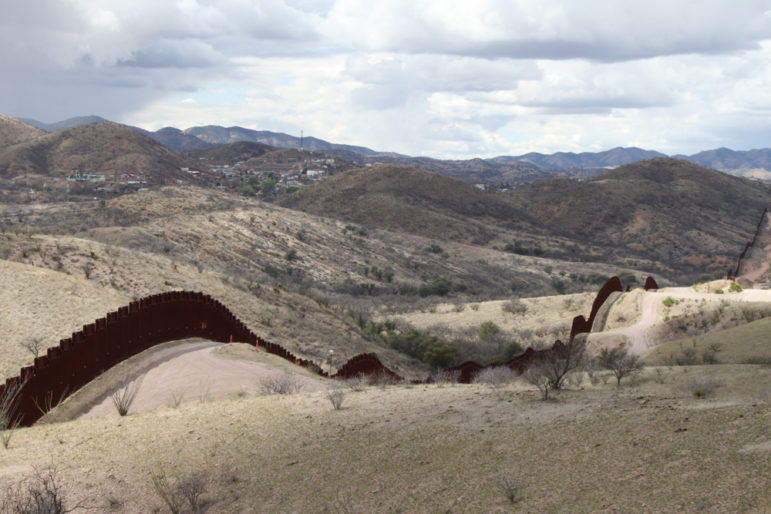

How Journalists Tracked Down Missing Data to Change the Conversation on Homelessness
When UK journalist Maeve McClenaghan was scrolling through Twitter in the winter of 2017, something caught her eye; a post from a local community member about a homeless person’s death.
Aside from being struck by the tragedy, McClenaghan felt like she had seen this kind of story before. After a basic search she found a number of posts that followed the same pattern cropping up across the country: the lonely death of a homeless person mourned by a local voice. However, there was a gap in terms of the data available from official bodies. To McClenaghan, it seemed like there was something larger happening. But no one was putting the pieces together.
She decided to dig deeper and with her team at the Bureau Local, part of the Bureau of Investigative Journalism (TBIJ), began by asking a simple question: If the data tells us more people are living homeless, are more people dying homeless?
While the question was relatively simple, finding the answer turned out to be anything but. McClenaghan started by consulting officials, spending weeks calling all those she could think of who could be collating data on homeless deaths. She tried everyone from the coroner’s office and hospitals to police forces, councils, and central government departments. Each one told her they had no information before passing her on to someone else who they assured her would have the data.
After countless calls, she realized no one had an answer. “When I told my editors that, we were really shocked and decided that that was going to be our mission; we were going to set out and try to fill the void and find that data ourselves,” McClenaghan told GIJN in a recent interview. They hoped to record homeless deaths, tell people’s stories, and create a database for an 18-month period that would highlight the scale of the problem and force action. The result was the Dying Homeless project, an 18-month investigation involving a network of over 1,000 journalists who would document 800 homeless deaths across the country.
Key to the project was enlisting the help of TBIJ’s Bureau Local, a collaborative investigative network of 1,426 journalists, community-minded citizens, and specialist contributors. McClenaghan devised a simple Google form for network members to fill out, with details of homeless deaths they encountered. TBIJ advertised the form on Twitter and put it on their website hoping to reach as many people as possible.
“I would work through each name, cross-checking and fact-checking the details before I included them in our public-facing database,” McClenaghan says of the process of analyzing the data that came in. “This was a big job, but it was essential in ensuring we were not double counting and that we were reporting the facts sensitively and anonymizing details where necessary.”
McClenaghan, colleague Charles Boutaud, and the rest of the team also traveled across the UK, visiting soup kitchens and homeless shelters to meet sources and understand the issue through first-hand accounts. They scoured local press reports, surveyed charities, and spoke to doctors and others who work with homeless people to add to their list of deaths. The team also gathered details from police and coroners’ inquests. McClenaghan describes the process as a “part-crowdsourced, part-jigsaw puzzle investigation.”
After all this information had been gathered, the team had to analyze and make sense of it. “After starting the project we decided that the jigsaw nature of the data collection meant we didn’t feel comfortable making direct comparisons from one winter to the next,” McClenaghan explains. “Instead, we dug into if and when these deaths were officially reviewed, and we looked into some of the causal factors.”
While rooting out the statistics was at the heart of the story, the project also sought to go beyond numbers by capturing and memorializing the individual stories of the deceased. Telling each person’s story emphasized the failure of the system to protect homeless people. In the UK, local authorities have a legal duty to prevent and relieve homelessness. However the investigation indicated that people were slipping through the cracks. After 18 months and 800 deaths recorded, the Bureau turned its findings over to the Museum of Homelessness which continues to publish the stories.
However, McClenaghan was not ready to put the story down. She followed up with a book, “No Fixed Abode: Life and Death Among the UK’s Forgotten Homeless,” that highlights the systemic failings that are fueling the homelessness crisis in the UK. She also recorded a podcast episode on the story.
McClenaghan says that after countless months of investigating, she found that the expected safety net for homeless people had been “sliced away by budget cuts. Sweeping cuts to mental health provision and drug and alcohol services, coupled with a benefit cap, increased rental costs, and lack of housing has created the perfect storm.”
“Many of these services are invisible to us until we need them, we hope or expect there will be support services in place if we get into trouble,” she adds. “My reporting showed how this is no longer the case.”
The investigation was shortlisted for an Amnesty Media Award for Best Investigation, and the British Journalism Award for Best Campaign, and McClenaghan was nominated for an Orwell prize. The story won the Royal Statistical Society award for best investigative journalism in 2019. The judges called it “truly outstanding.”
The whole investigation began with a simple question and the discovery of a data gap. But homelessness is also a global problem, and McClenaghan offers these tips for investigative reporters keen to explore this subject, and similar themes, where they are.
1. Don’t Be Put Off by Missing Data
According to McClenaghan, a data gap does not necessarily need to frustrate your investigation; in fact, it can provide an opportunity. The Dying Homeless project illustrates that journalists do not need to be discouraged if the data to answer their questions does not exist yet. McClenaghan described her investigation method as an “imprecise science” as her team used a Google form to gather details on the homeless deaths, which was sent out to local reporters, experts, and people working with the homeless community.
The form was fairly simple and asked for information such as the name of the deceased, their age, and where the person had been sleeping. This allowed the team to paint a more complete picture of the homeless experience.
“We’re not the experts in this, so we used a definition [of homelessness] that the charity Crisis laid out in several of their reports, so that included people sleeping [outdoors], people in emergency accommodation, hostels, and sofa surfers,” explains McClenaghan.
They also decided to capture data for an 18-month period to include two winter seasons. While there were some limitations in the dataset — making inter-year comparisons difficult — McClenaghan notes that their official analysis did prove that homeless deaths are increasing. The methodology also provided the building blocks for the Office for National Statistics (ONS) to produce its own count of homeless deaths, building on this investigation.
2. Collaborate
This investigation would not have been possible without the network of the Bureau Local and input from members of the public. McClenaghan notes: “Collaboration was so important because we had eyes on the ground across the UK.”
Throughout the 18 months, local reporters published 95 stories highlighting homeless deaths. McClenaghan says that meant “that this issue didn’t get forgotten about, the people’s stories got told, and with the depth that they deserved to be told in.” TBIJ also used the Twitter hashtag “#MakeThemCount” to raise further awareness.
The investigation made national news; McClenaghan believes that the dual-pronged approach to reporting had a major impact. “What we did by publishing nationally and locally in the forensic detail that we were asked to do, was that everyone was held to account at every level,” she notes. “Local reporters could say to their council ‘How did these deaths happen? Why hasn’t there been any official review into that? What are you going to do to change it?’ And at a national level, we could say it is incredibly shameful that as one of the richest nations in the world, we have 800 people dying homeless in the course of 18 months.” Collaboration gave the investigation force.
3. Check Your Facts
Although McClenaghan describes the data collection process as an imprecise science, she was vigilant in her fact-checking to ensure the count was as accurate as possible, and says this is vital. One of the first methods of verification was shoe-leather reporting. “I did a lot of work traveling the country myself and making connections with people working in soup kitchens, hostels, and doctors’ practices that worked with people experiencing homelessness so that they could feed into the data,” she recounts.
Of course, McClenaghan could not check every account in person, so her team developed criteria for assessing information as it came in through their form. She explains: “If it came from a reliable news source, we were happy to include it. We trusted our local journalists to have done that reporting thoroughly. If it came from a member of the public, we would go and double check by talking to an official organization that worked with homeless people in the area so that we could corroborate it with them.”
McClenaghan adds that this was important not only as a fact-checking exercise, but also to ensure there were no sensitivities around reporting details of the deceased that could put other people at risk. “We relied on building a lot of trust with those organizations,” she says.
4. Always Remember the People Behind the Story
From the start of this investigation, McClenaghan knew it was about more than just data. “Every one of these 800 data points in our database was a person with loved ones, with hopes, with dreams, with a rich history,” she says. “I spent the year going to funerals, going to inquests, talking to family members and friends of people who had passed away.”
The Bureau created a page on its website that told snippets of some of the stories. McClenaghan says this was a key inspiration for her in writing her book. She notes: “The stories that we were hearing were so fascinating and interesting and heart-breaking and important because each person told in a different way, the different ways that the safety net had failed them.”
The human side of the story highlighted the gravity of the figures. McClenaghan believes that understanding the nuance of each person’s situation was essential for capturing the causes and consequences of modern homelessness in the UK, and for highlighting what needs to change. “I think it was only through really going deep into those stories that you understand, there are moments when interventions could have helped, and they weren’t there, and here’s how we learn lessons to prevent this from happening again,” she says.
Aside from its emotional impact, the Dying Homeless project also had real world impact. In 2018, the ONS and the Scottish National Records Office began producing official data on the number of people dying homeless in England, Scotland, and Wales. The team at TBIJ shared their database early on to help them develop methodology, and were thanked for their “advice and assistance” by the ONS.
Ben Humberstone, deputy director for health analysis and life events at the ONS, wrote at the time: “Understanding a problem is the first step to solving it, and producing these statistics will help society make better decisions to tackle homelessness and stop homeless people dying in our communities.”
McClenaghan also recognized the importance of this count being formalized. “When those first official statistics came out, that felt like, okay, this isn’t an issue that can be ignored any longer,” she says. “There was this flurry of debate after that and politicians coming out and saying this is a humanitarian disaster on UK soil, and things need to change.”
According to Francesca Albanese, the head of research and evaluation at Crisis, this project had two major impacts: firstly, the ONS count. “It led to it being an official data source released on a yearly basis with trend data available on the number of people who have died whilst homeless,” Albanese says.
Just as important, in Albanese’s opinion, were the human stories that the TBIJ told in this project. “The piece was really, really influential in bringing a human story, bringing awareness that these are people’s lives we’re talking about,” she notes. “Hundreds of people every year who are dying whilst homeless and it is preventable.”
Additional Reading
How Partnerships are Boosting Local Investigative Journalism
GIJN Resource: Poverty Database
 Hannah Coogans is a freelance writer and an editorial assistant at GIJN. She has an MA in investigative journalism from City University, and previously worked as a researcher in Hong Kong focusing on wildlife crime and trafficking. She has also worked as a researcher for various Channel 4 Dispatches programs in the UK.
Hannah Coogans is a freelance writer and an editorial assistant at GIJN. She has an MA in investigative journalism from City University, and previously worked as a researcher in Hong Kong focusing on wildlife crime and trafficking. She has also worked as a researcher for various Channel 4 Dispatches programs in the UK.













